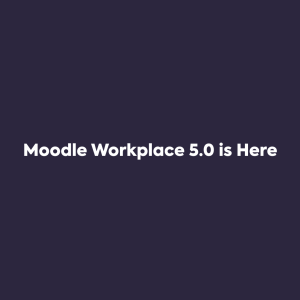The most amazing – and challenging – thing about the human brain is that every single one is different. No two brains are exactly the same.
Why challenging? Well, from a teacher’s point of view, you have one, two, possibly three dozen brains all taking in the information you provide in every class. And the tough bit is articulating that information in such a way that every brain is able to take it in effectively.
But that’s rarely – if ever – possible.
A growing concept – one that may seem relatively new but has, in fact, been with us for at least 15 years – is personalised learning. If people learn in different ways, if students find different techniques more rewarding or engaging than others, why not tailor their learning accordingly?
Personalised learning has never been more possible than it is now: with online learning, tailoring learning experiences is a real, easily achievable possibility.
You will still need your students to be committed to their learning – and support from parents via engagement with their child’s learning will help massively – but relevant, timely and well-planned-out learning delivered in the right way to your students should see better outcomes for them, you and the school.
Choices
Online learning allows students to make choices in their learning. For example, will I revise for this test by reading this passage, or watching this video?
Creating e-learning courses allows you to provide these kinds of choices for students – giving them the freedom to learn how they want to learn, using a medium that most suits their personality.
Learning ‘on the go’
Accessible learning wherever you are opens up many possibilities. Learning ‘on the go’ allows students to access their learning and digest ‘snippets’ when they’re on the train, at the supermarket or at home.
Location-based e-learning takes it one step further. Apps are now available that react to your actual location, with game-based playing employing interactive media that activates on mobile devices at real places in real situations.
Think this can’t be possible? Watch this Prezi as an introduction to location-based learning, and read this blog post to find out how it actually works.
Self-generated content
A powerful way to engage students in their learning is to let them generate the content themselves.
Learners who take charge of their education in such a way are known as extreme learners – and they’re intensely motivated students. However, that’s not to say the majority of your students cannot benefit from content they’ve generated themselves. In fact – most, if not all of them are probably already doing it, without realising.
Blogs, forum posts, tweets and videos are all forms of content a student may have created themselves – and, tied in with relevant subjects, can aid and enhance their learning.
Content-rich learning
Services such as Wildfire allow you to pepper your e-learning courses with powerful, interactive content.
Automatically-linked content can be created with YouTube, Wikipedia and the like – and it allows your students to move out of structured, linear online learning and gives them the opportunity to explore a topic further.
‘Just in time’ learning
Online learning allows students to access their learning whenever they want, wherever they are. The internet has made obtaining information almost effortless, with what you need to know available at the click of a button, in seconds.
Allow students to grow their mind by incorporating the wonders of the world wide web into their learning. With internet access available on their smartphone at any time, it’ll get them thinking outside the classroom as well as in.
Social learning
For so long (and still, in many cases) seen as a distraction from learning, social media is slowly starting to play a key role in students’ development. Social media is personal – from timelines tailored to the user, to Twitter conversations and related posts.
This personal experience has been the key to the massive popularity rise in sites like Facebook and Twitter over the last eight to ten years, and it’s crucial to their survival.
Look at it from another angle, and social media is actually a social learning experience, allowing students to learn from friends, relatives and experts they may follow.
Personalised learning is a massive opportunity for students to learn more, in a more fun and engaging way. Ultimately, it can make your job easier – and all the resources are readily available online, when you need them.
To find out more about how Moodle can support personalised learning, just get in touch with the Titus team.






